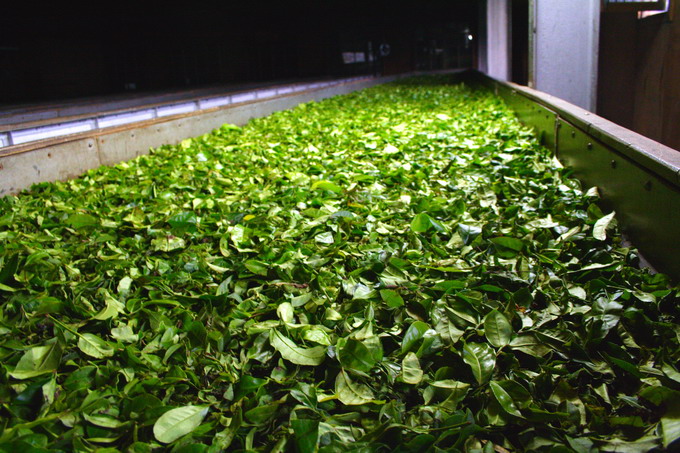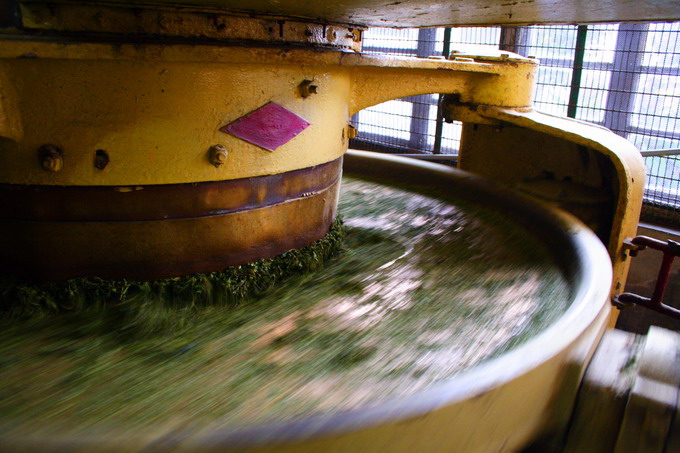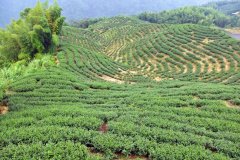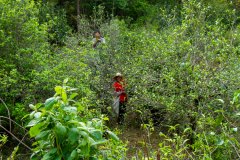Introduction to the technological process of Oriental Beauty Tea how to distinguish the difference between stir-fried tea and baked tea
sun withering
After picking, the tea leaves are scattered all over the ground in natural sunlight. It's called sun wither. Usually cloudy weather is ideal to avoid excessive damage to the tea leaves. If the weather continues to be fine, cover the tea leaves with a black cloth to block out the strong sunlight. With the sunlight, the moisture inside the tea leaves is evaporated, triggering fermentation moderately. The tea leaves will gradually release a fresh aroma.

indoor withering
The fermentation method of oolong tea is completely different from black tea. After sun drying, the tea leaves are transported to the factory and spread on sheets. The tea leaves used in spring Oriental Beauty have only one bud and two leaves, unlike ordinary mountain oolong tea, which requires 4 - 5 leaves. In the process of making "Beauty of Spring," because the moisture content of tea leaves is generally higher than that of ordinary mountain tea, the withering process of Oriental Beauty takes longer. Its withering period is longer, accelerating the hydrolysis and oxidation process, thus producing the unique sweetness and taste of Oriental beauty. Then pour the tea leaves onto a bamboo tray. This agitation and churning causes friction, which causes the tea to start fermenting. Then put the tray on the shelf and repeat the process several times. This is called fermentation. When tea leaves are bruised, oxidases mediate the oxidation of tea leaves. Oriental Beauty fermented longer than ordinary oolong tea. Because the tea leaves are soft and brittle, the preparation process is very gentle. Once the master tea maker finds that fermentation is sufficient, the tea leaves are sent for heat treatment to prevent further fermentation. If it is not done quickly, the tea leaves will continue to ferment and eventually turn into black tea.
The number of rotations and fermentation time are judged according to the moisture content, flavor and color of the tea leaves. This decision requires first-class experienced tea making technicians, which has a great impact on the quality of tea. All technicians follow the instructions of the tea master. In order to get quality tea, we need to select an excellent tea maker.

rolling
At first, tea leaves were wrapped in cloth bags. Oriental Beauty does not carry roll bags to protect tea leaves from cracking. The intense rolling process can damage the tea leaves, resulting in bitter, astringent and impure flavors. Therefore, the traditional rolling process is carried out under moderate pressure and moderate motion. During the rolling process, the temperature of the tea drops and becomes brittle. The tea leaves are then heated in a barrel at 60-80 degrees Celsius to soften them. If pressed too hard, the tea leaves will produce a different taste; on the other hand, if it is too soft, the taste of the tea leaves will be much weaker. The same sequence repeated several times. Each parameter varies according to the moisture content of the tea leaves, etc. A skilled tea master must carefully examine the condition of the tea leaves and use the appropriate method in each process. This requires a high degree of precision and expertise.
After this rolling process is complete, the tea leaves are dried, which reduces the moisture content to 5%.
Important Notice :
前街咖啡 FrontStreet Coffee has moved to new addredd:
FrontStreet Coffee Address: 315,Donghua East Road,GuangZhou
Tel:020 38364473
- Prev

What are the honey flavor black tea and Oriental beauty tea? Why do they have honey flavor?
Once upon a time, there was a farmer who was too busy to take care of his tea garden. Later, his tea plantation was attacked by a horrendous swarm of green flies. All the bitten tea leaves turned yellow. However, he still processes tea leaves because he cannot give up his tea. To his surprise, the tea, made from leaves bitten by insects, had a very strong fruity flavor. Coincidentally, one
- Next

What is the difference between Yunnan ancient tree Yunnan black tea and Pu'er? where is the authentic ancient tree black tea?
The ancient tree Dianhong is characterized by a strong aftertaste, which is far better than ordinary black tea. Yunnan black tea means Yunnan black tea. Yunnan black tea is called Yunnan red in Chinese. Yunnan means Yunnan, and red means black tea. An old tree means a tea tree with a certain age. After all, the ancient tree Dianhong refers to Yunnan black tea. Black tea made from rare camellia trees, different from ordinary garden tea.
Related
- A complete list of coffee bean names and their meanings! What is Yejia Shefi coffee? Where is Mantelin coffee?
- What grade does Arida Manor Kaduai coffee beans belong to? What treatment is Arida ASD slow anaerobic sun exposure?
- The milk tea cup becomes smaller?! Overlord Tea Girl launches a new "Return to Yunnan" series
- Accused of selling counterfeit and high-priced coffee beans! Well-known boutique coffee brand "Oukelao" bowed and apologized!
- How to make espresso dumplings? Can I eat coffee and glutinous rice balls together?
- Save the unformed and stagnant powder cakes in one second! What is the problem with stagnant water in the powder bowl of the espresso machine?
- What does hand-brewed coffee stop mean? Why is it not recommended to make coffee by hand?
- Is it normal to smell like coffee? Why does coffee smell like alcohol? What's wrong with the strong smell of cold extract ice dripping ice brewed coffee?
- How to solve the problem that hand-brewed coffee extraction takes too long? Why is the water flowing so slowly when making coffee?
- The main points of making Australian white coffee, the proportion details, how does Australian white properly foam and blend the flowers?

